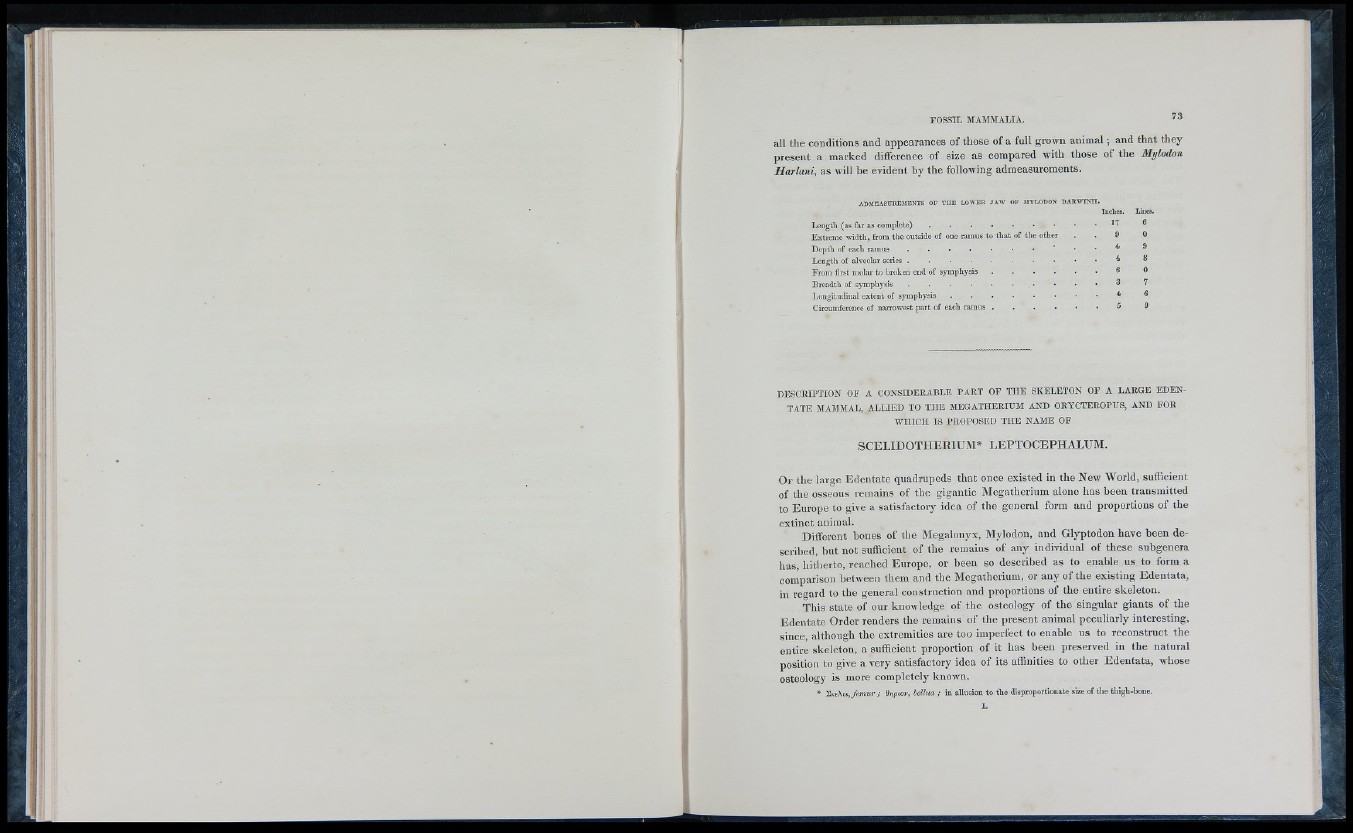
all the conditions and appearances o f those o f a full grown a n im a l; and that they
present a marked difference o f size as compared with those o f the Mylodon
Harlani, as will be evident b y the following admeasurements.
ADMEASUREMENTS OF THE LOWER JAW OF MYLODON DARWINII.
Length (as far as c o m p l e t e ) ..............................................................
Extreme width, from the outside of one ramus to that of the other
Depth of each ramus
Length of alveolar series
From first molar to broken end of symphysis . . . .
Breadth of s y m p h y s i s ....................................................
Longitudinal extent of symphysis . . . . . .
Circumference of narrowest part of each ramus . . . .
Inchce. Linca.
17 6
9 0
4 9
4 8
6 0
3 7
4 6
5 9
DESCRIPTION OF A CONSIDERABLE PART OP TH E SKELETON OP A LARGE ED EN TATE
MAMMAL, ALLIED TO TH E MEGATHERIUM AND ORYCTEROPUS, AND POR
WH ICH IS PROPOSED TUB NAME OF
SC E L ID O T H E R IUM * L E P TO C E PH A L UM .
Of the large Edentate quadrupeds that once existed in the N ew World, sufficient
o f the osseous remains o f the gigantic Megatherium alone has been transmitted
to Europe to give a satisfactory idea o f the general form and proportions o f the
ex tinc t animal.
Different bones o f the Megalonyx, Mylodon, and Glyptodon have been described,
but not sufficient o f the remains o f any individual o f th ese subgenera
has, hitherto, reached Europe, or been so described as to enable us to form a
comparison between them and the Megatherium, or any o f the ex isting Edentata,
in regard to the general construction and proportions o f the entire skeleton.
Th is state o f our knowledge o f the osteology o f the singular giants o f the
Edentate Order renders the remains o f the present animal peculiarly interesting,
since, although the extremities are too imperfect to enable us to reconstruct the
entire skeleton, a sufficient proportion o f it has been preserved in the natural
position to give a very satisfactory idea o f its affinities to other Edentata, whose
osteology is more completely known.
* Sk-£X«,/m2i r ; %n^iov,Mlua ; in allusion to tlie disproportionate size of the thigh-bone.
L